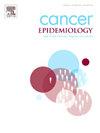厄瓜多尔因癌症而损失的生命年数
IF 2.4
3区 医学
Q3 ONCOLOGY
引用次数: 0
摘要
背景癌症是导致全球死亡的主要原因。在美洲,癌症也是导致死亡的主要原因之一。在厄瓜多尔,关于疾病负担的研究非常有限,没有一项研究能在一项研究中分析或估计所有类型癌症的负担。因此,本研究旨在估算 2014 年至 2022 年厄瓜多尔因癌症而过早丧失的生命年数。研究使用了厄瓜多尔共和国 2014 年至 2022 年的普通死亡数据库、2014 年至 2021 年的人口预测以及 2022 年的人口普查。ICD-10代码为C00-C96的死亡病例被列为癌症死亡病例。根据 Coale-Demeny West 模型的生命表估算了死亡率和因癌症过早丧失的生命年数,并采用了 3% 的标准时间折扣,未按年龄加权。2021 年和 2022 年,死亡率再次上升,达到了整个研究中死亡率和过早死亡年数的最高峰。据估计,因癌症而过早丧失的生命年数约为 130 万年。过早丧失生命年数最多的癌症类型是胃部恶性肿瘤(188 180)、子宫(117 142)(包括子宫癌和宫颈癌)和白血病(107 440)。在男性中,从高到低依次为胃肿瘤(101.112)、前列腺肿瘤(67.624)和白血病(55.654);在女性中,从高到低依次为子宫恶性肿瘤(117.142)、乳腺癌(100.217)和胃肿瘤(87.067)。本文章由计算机程序翻译,如有差异,请以英文原文为准。
Years of life lost due to cancer in Ecuador
Background
Cancer is the leading cause of death worldwide. In the Americas, it is also one of the leading causes of death. In Ecuador, studies on the burden of disease are limited and none analyze or estimate the burden of all types of cancer in a single study. Therefore, the aim of this study is to estimate the years of life lost prematurely due to cancer in Ecuador from 2014 to 2022.
Methods
Cross-sectional observational analysis study. The databases of general deaths from the years 2014 to 2022, population projections from 2014 to 2021 and the population census for the year 2022 of the Republic of Ecuador were used. Deaths registered with ICD-10 code C00-C96 were included as deaths from cancer. The mortality rate and years of life lost prematurely due to cancer were estimated, considering the life tables of the Coale-Demeny West model and a standard time discount of 3 % was implemented without weighting by age.
Results
An increase in mortality and premature years of life lost was observed in the period 2014–2019, but in 2020 a reduction in mortality was seen in several types of cancer. In 2021 and 2022 mortality increased again, reaching the maximum peak of mortality and premature years of life lost in the entire study. Approximately 1,3 million years of life lost prematurely due to cancer were estimated. The types of cancer with the greatest number of years of life lost prematurely were malignant tumors of the stomach (188.180), uterus (117.142), which include both uterine cancer and cervical cancer, and leukemia (107.440). In men, in descending order, these were tumors of the stomach (101.112), prostate (67.624) and leukemia (55.654), while in women, these were malignant tumors of the uterus (117.142), breast (100.217) and stomach (87.067).
Conclusions
The results of this study provide a broader basis for debate on public health policies, efficient allocation of resources, and enable monitoring of cancer and prevention strategies over time.
求助全文
通过发布文献求助,成功后即可免费获取论文全文。
去求助
来源期刊

Cancer Epidemiology
医学-肿瘤学
CiteScore
4.50
自引率
3.80%
发文量
200
审稿时长
39 days
期刊介绍:
Cancer Epidemiology is dedicated to increasing understanding about cancer causes, prevention and control. The scope of the journal embraces all aspects of cancer epidemiology including:
• Descriptive epidemiology
• Studies of risk factors for disease initiation, development and prognosis
• Screening and early detection
• Prevention and control
• Methodological issues
The journal publishes original research articles (full length and short reports), systematic reviews and meta-analyses, editorials, commentaries and letters to the editor commenting on previously published research.
 求助内容:
求助内容: 应助结果提醒方式:
应助结果提醒方式:


